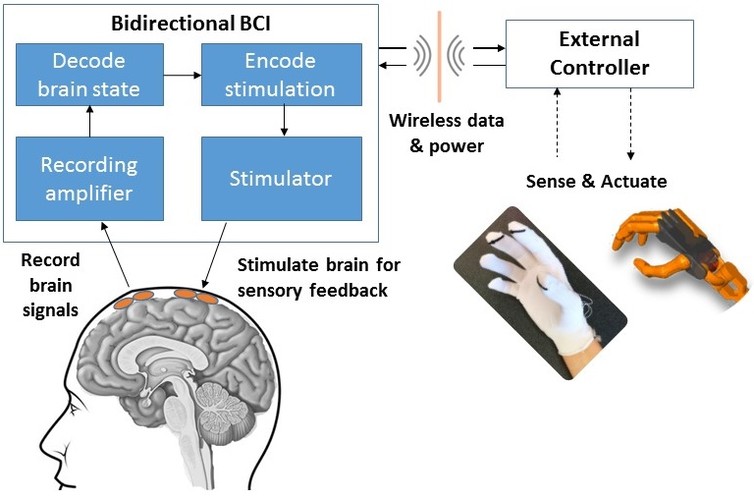Just as ancient Greeks fantasized about soaring flight, today’s imaginations dream of melding minds and machines as a remedy to the pesky problem of human mortality. Can the mind connect directly with artificial intelligence, robots and other minds through brain-computer interface (BCI) technologies to transcend our human limitations?
Over the last 50 years, researchers at university labs and companies around the world have made impressive progress toward achieving such a vision. Recently, successful entrepreneurs such as Elon Musk (Neuralink) and Bryan Johnson (Kernel) have announced new startups that seek to enhance human capabilities through brain-computer interfacing.
How close are we really to successfully connecting our brains to our technologies? And what might the implications be when our minds are plugged in?
Origins: Rehabilitation and restoration
Eb Fetz, a researcher here at the Center for Sensorimotor Neural Engineering (CSNE), is one of the earliest pioneers to connect machines to minds. In 1969, before there were even personal computers, he showed that monkeys can amplify their brain signals to control a needle that moved on a dial.
Much of the recent work on BCIs aims to improve the quality of life of people who are paralyzed or have severe motor disabilities. You may have seen some recent accomplishments in the news: University of Pittsburgh researchers use signals recorded inside the brain to control a robotic arm. Stanford researchers can extract the movement intentions of paralyzed patients from their brain signals, allowing them to use a tablet wirelessly.
Similarly, some limited virtual sensations can be sent back to the brain, by delivering electrical current inside the brain or to the brain surface.
What about our main senses of sight and sound? Very early versions of bionic eyes for people with severe vision impairment have been deployed commercially, and improved versions are undergoing human trials right now. Cochlear implants, on the other hand, have become one of the most successful and most prevalent bionic implants – over 300,000 users around the world use the implants to hear.
 A bidirectional brain-computer interface (BBCI) can both record signals from the brain and send information back to the brain through stimulation. Center for Sensorimotor Neural Engineering (CSNE), CC BY-ND
A bidirectional brain-computer interface (BBCI) can both record signals from the brain and send information back to the brain through stimulation. Center for Sensorimotor Neural Engineering (CSNE), CC BY-ND
The most sophisticated BCIs are “bi-directional” BCIs (BBCIs), which can both record from and stimulate the nervous system. At our center, we’re exploring BBCIs as a radical new rehabilitation tool for stroke and spinal cord injury. We’ve shown that a BBCI can be used to strengthen connections between two brain regions or between the brain and the spinal cord, and reroute information around an area of injury to reanimate a paralyzed limb.
With all these successes to date, you might think a brain-computer interface is poised to be the next must-have consumer gadget.
https://www.ge.com/news/reports/close-connecting-human-minds-artificial-intelligence